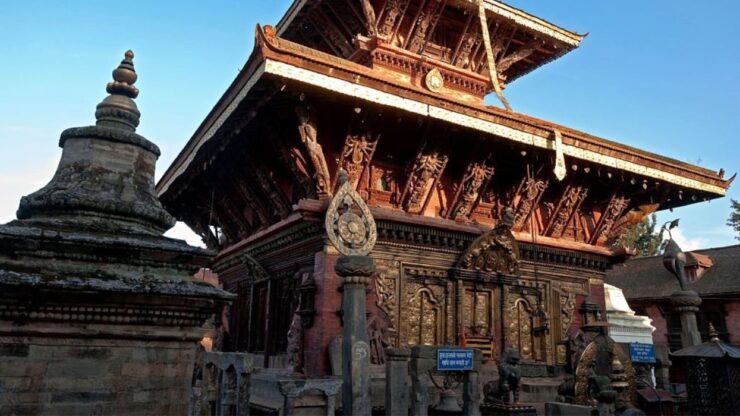Before moving on to the UNESCO World Heritage Sites in Nepal, let’s first know what a UNESCO World heritage site is. The United Nations Educational, Scientific and Cultural Organization (UNESCO) has designated specific locations or landmarks as having exceptional cultural, historical, or scientific value. These locations or landmarks are known as UNESCO World Heritage Sites.
And these locations and landmarks are protected through international agreements due to their exceptional universal worth. Likewise, UNESCO has divided such sites into three categories: cultural heritage, natural heritage, and mixed heritage. Examples of UNESCO World Heritage Sites include the Great Barrier Reef, the Great Wall of China, the Pyramids of Egypt, Machu Picchu in Peru, the Taj Mahal in India, the Acropolis in Greece, the Colosseum in Italy, and the Grand Canyon National Park in the United States, etc.
10 UNESCO World Heritage Sites in Nepal
In the context of Nepal, Nepal is endowed with unique and distinctive sites, totaling ten World Heritage Sites, seven of which are located in Kathmandu. Those ten World Heritage Sites are listed in cultural and natural heritage in UNESCO World Heritage Sites. The lists of UNESCO World Heritage Sites in Nepal are as follows:
- Pashupatinath Temple
- Swayambhunath Stupa
- Boudhanath Stupa
- Kathmandu Durbar Square
- Patan Durbar Square
- Bhaktapur Durbar Square
- Changu Narayan Temple
- Lumbini
- Chitwan National park
- Sagarmatha National Park
Pashupatinath Temple
Pashupatinath Temple is one of the UNESCO World Heritage Sites, which is included in the cultural heritage category in UNESCO World Heritage Site. One of the world’s most significant Hindu pilgrimage destinations is Pashupatinath Temple, which is situated in Kathmandu on the banks of the Bagmati River. People visit this temple to worship Lord Shiva. The holy Bagmati River borders it to the east. The main temple has a two-story copper roof that is coated with gold. There is a belief that wishes are said to come true at this beautifully decorated temple with wooden sculptures. A magnificent golden statue of Shiva’s bull, Nandi, is one of the most impressive decorations in the temple.
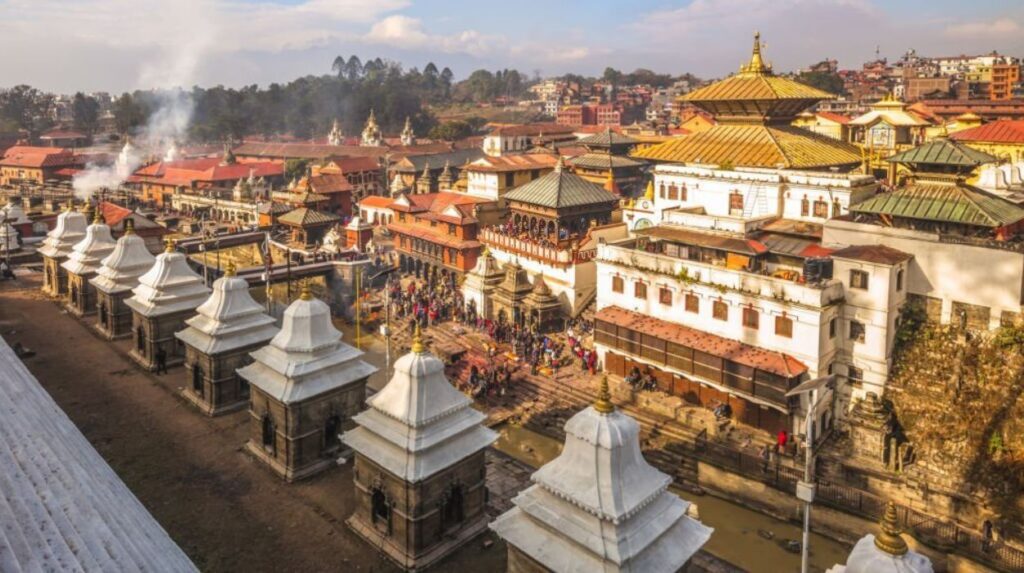
Moreover, many other small temples, ashrams, and sculptures of Lord Shiva surround the main temple complex. Every year thousands of tourists from worldwide visit the Pashupatinath temple to pay their respect to Lord Shiva. The most well-known festival celebrated on the premises of Pashupatinath temple is Shivaratri. During this festival, devotees perform puja to combat darkness and ignorance from their life and the world. Another famous festival celebrated here is Teej. Teej is a festival celebrated by Hindu women during which they fast the whole day for the long life of their husbands. The temple is also crowded on the 11th day of the lunar month of Ekadashi.
Swayambhunath Stupa
Swayambhunath Stupa is one of the ancient and most significant Buddhist shrines in Nepal’s Kathmandu valley. Swayambhunath stupa is also known as a `Monkey Temple’ due to the large number of monkeys in the area. The temple complex includes a stupa, several shrines, temples, and prayer wheels. The stupa, the most noticeable feature of the site, is draped with vibrant prayer flags and has a golden spire on top. Its tall white dome and glistening golden spire can be seen from all sides of the valley.
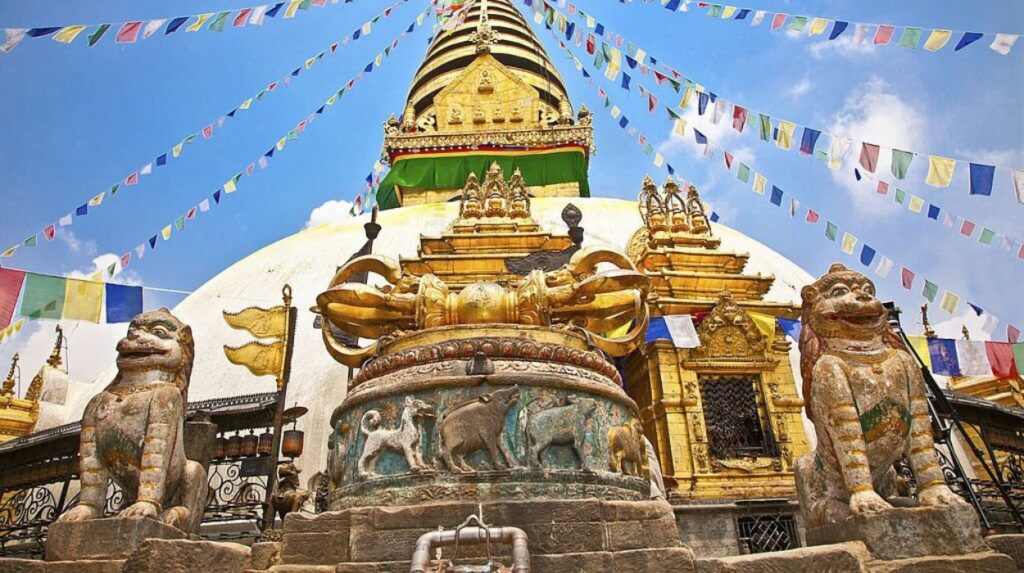
The stupa is a famous tourist destination that attracts both Buddhists and non-Buddhists. Visitors can tour the site’s numerous shrines and temples and ascend the hill for breathtaking city views. Swayambhunath is a must-see location for anybody visiting the Kathmandu Valley since it represents Nepal’s rich cultural legacy and spiritual traditions.
Boudhanath Stupa
The semicircular Boudhanath stupa is a renowned Buddhist shrine and a significant center for Tibetan Buddhism. This stupa has a gigantic white dome surrounded by prayer flags and smaller stupas. Besides being a popular pilgrimage site for Buddhists, other religious groups also visit the stupa to calm their minds. In the evening, we can see many people walking three or more times around the stupa while reciting the mantra ‘Om Mani Padme Hum.’
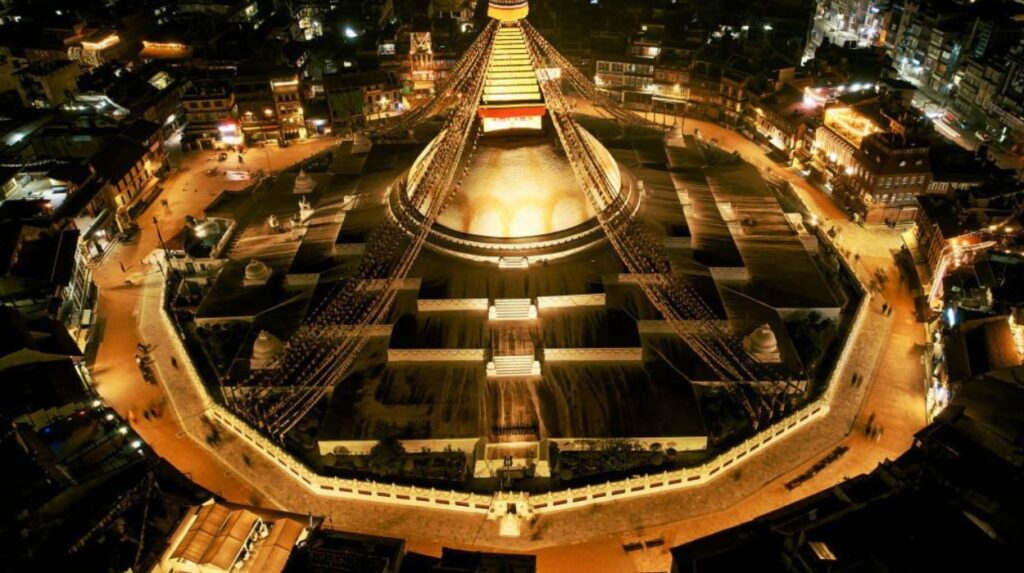
Visitors can also tour the area around the stupa, which is well-known for its bustling Tibetan community and many shops selling handicrafts, prayer flags, and other Buddhist things, and learn more about Tibetan and Buddhist culture.
Kathmandu Durbar Square
Kathmandu Durbar Square, aka Basantapur and Hanuman Dhoka, lies in the heart of Kathmandu valley. It is the top roaming destination for tourists in Kathmandu valley. This place always astounds first-timers with its beautiful wood carvings and historical history. This palace received its name Hanuman Dhoka from a statue of Hanuman erected by King Pratap Malla in 1672. It was the royal palace for Nepal’s Malla and Shah dynasties. Until 1886, the royal family lived in Hanuman Dhoka palace and then moved to Narayanhiti palace.
Nevertheless, rituals and ceremonial occasions are still held in Durbar Square. You can explore buildings from the Malla and Shah Dynasties and statues and artefacts in this durbar square. There are more than 50 temples in Kathmandu Durbar Square. Hence this place is known as “the Museum of Temples.”
Patan Durbar Square
UNESCO World Heritage Site Patan Durbar Square is in Patan, also known as Lalitpur, in Nepal’s Kathmandu Valley. This site has ancient temples, palaces, and courtyards built during the 17th century. Newari art and architecture are reflected in the buildings and structures within durbar square. Stone architecture and intricate woodcarvings are among the things that make this square famous.
Patan Durbar Square has many notable temples, including the Krishna Mandir, a three-story temple dedicated to Lord Krishna; the Sundari Chowk, a courtyard with a stone fountain and a sunken water tank; the Taleju Bhawani Temple, and a five-story temple with golden spires. There are also several museums and art galleries in Patan Durbar Square that showcase the region’s culture and history.
Bhaktapur Durbar Square
Bhaktapur Durbar Square is in Bhaktapur, Nepal. It showcases the ancient arts of Kathmandu and Bhaktapur elegantly, making it one of the valley’s most charming architectural highlights and culture of Nepal. Locally, it is known as Khwopa or Newa City. The top attraction of Bhaktapur Durbar Square includes the 55 Window Palace, the Golden Gate, the Lion Gate, and the Nyatapola Temple. The tallest temple in Nepal, the Nyatapola Temple, standing at the height of 30 meters, is also in Bhaktapur Durbar Square.
Changunarayan Temple
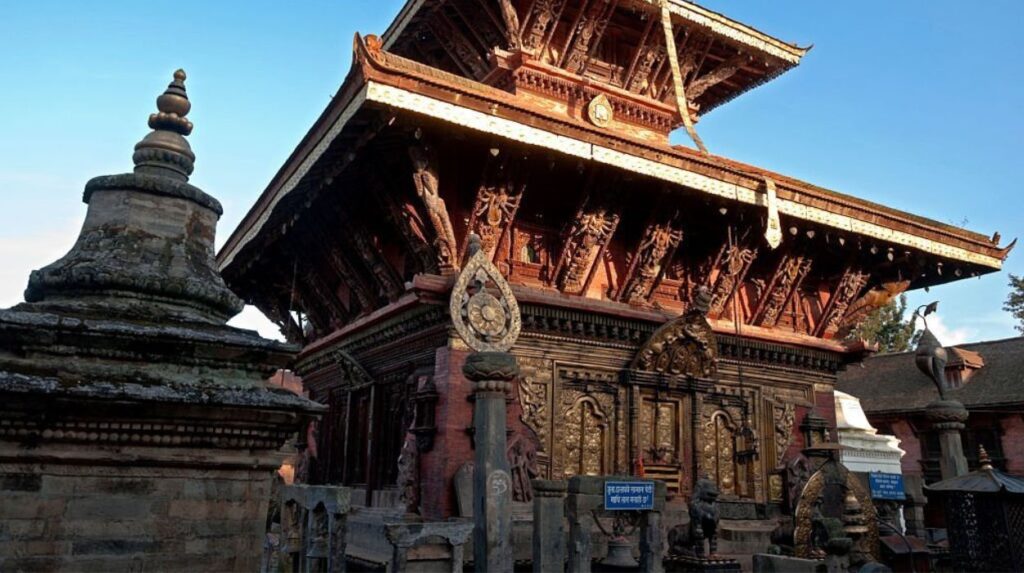
Changunarayan Temple is the oldest Hindu temple on the hilltop of Changu Narayan village, close to Bhaktapur. This temple is devoted to Lord Vishnu, also known as Lord Narayan.
The temple is renowned for its exquisite stone carvings from the Lichhavi era that represent a variety of gods and goddesses, as well as stories from Hindu mythology. The significant attractions of Changunarayan Temple are the ancient pillar of Mandeva, historical statues related to Lord Vishnu, the historical temple of lord shiva and other Hindu and Buddhist deities, the Changu Museum and Ethnographic Museum, Champak forest, local markets, and villages.
Lumbini
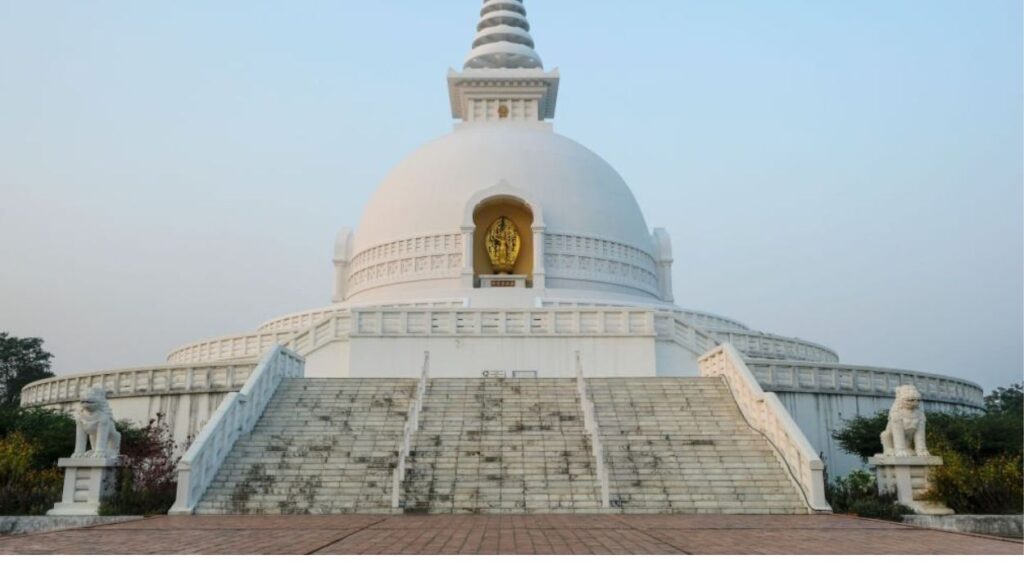
Lumbini is another UNESCO World Heritage Site in Nepal. It is located in the Terai region of Nepal, around 300 kilometers southwest of Kathmandu. Lumbini is the birthplace of Gautam Buddha. The Sacred Garden, where Lord Buddha was born, and Lake Puskarini, where Mayadevi bathed in holy water before giving birth to the Buddha, are the two main highlights of this sacred site. It is a holy place for Buddhists. People from all over the world travel here to study Buddhist teachings, understand more about this religion of peace, practice meditation, and renew their spirits.
Chitwan National Park
The Chitwan national park is one of the oldest national parks in Nepal, which is a habitat for hundreds of wild animals, birds, flora, and fauna. It was established in 1973 and was enlisted as a UNESCO World Heritage site in 1984 in the natural heritage category. This national park has ample open space for wild animals in Nepal, where wild animals like one horn rhino, Royal Bengal tiger, sloth bears, and leopards spend their day and finds their prey. Inside the Chitwan National Park, visitors can go on an elephant safari, a jeep safari, a canoe trip along the Rapti River, a tour of the Tharu community village where they can learn about their culture and traditions, and more.
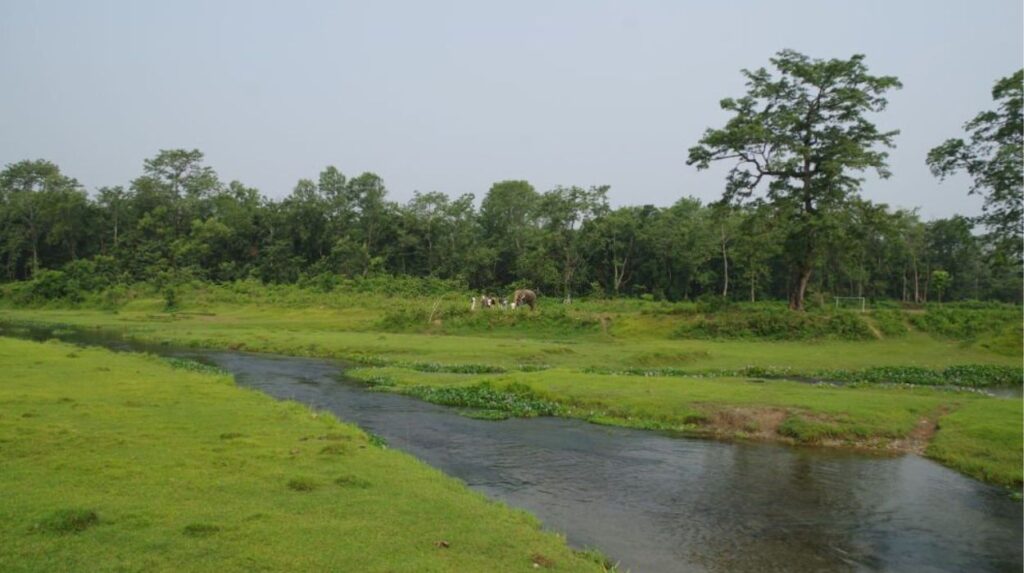
Sagarmatha National park
Sagarmatha National Park is another national park in Nepal that has made it to the list of UNESCO World Heritage Sites. Its name comes from Mount Everest, also known as Sagarmatha in Nepali, and is situated in the nation’s northeastern region. This national park was established in 1976 and was enlisted as a UNESCO World Heritage Site in 1979 in the natural heritage category. Many high-altitude plants and animals are found in the park, including the snow leopard, red panda, musk deer, and Himalayan black bear. Similarly, many glaciers, notably the Khumbu Glacier, the tallest glacier in the world, are also found in the park.
Conclusion
Nepal is home to ten UNESCO World Heritage Sites: Pashupatinath temple, Swayambhunath Stupa, Boudhanath Stupa, Kathmandu Durbar Square, Patan Durbar Square, Bhaktapur Durbar Square, Changunarayan Temple, Lumbini, Chitwan National Park, and Sagarmatha National Park. Among these, seven are in Kathmandu, and the remaining three are outside of Kathmandu. These Nepali UNESCO World Heritage Sites are prominent tourist and pilgrimage destinations, showcasing the nation’s rich cultural and natural legacy.
